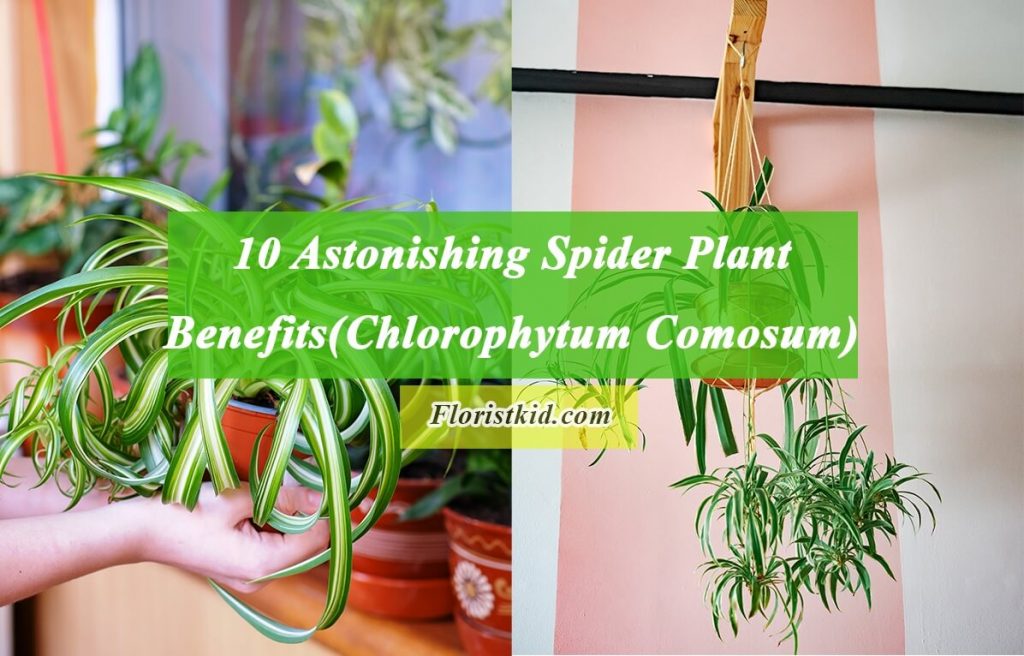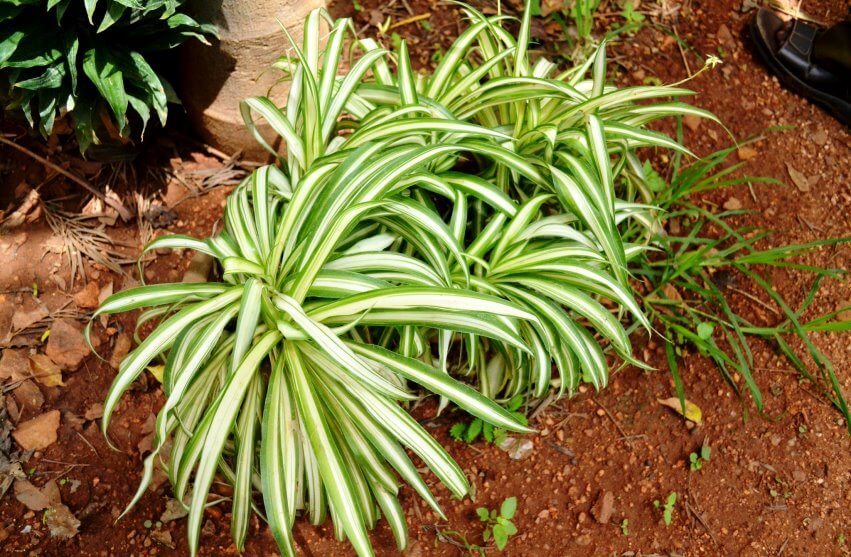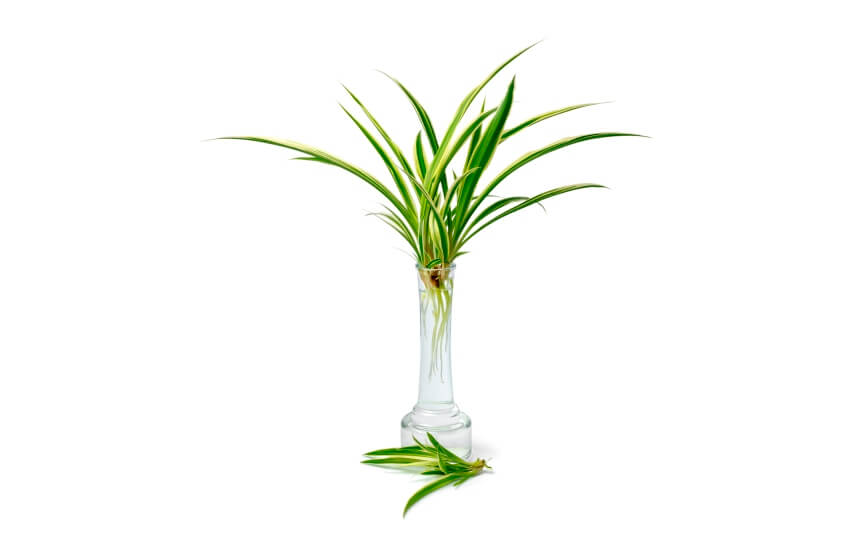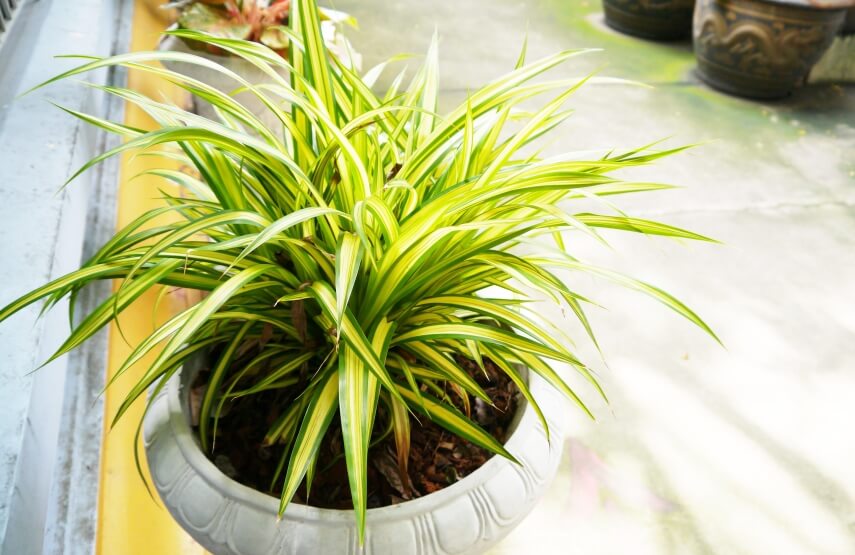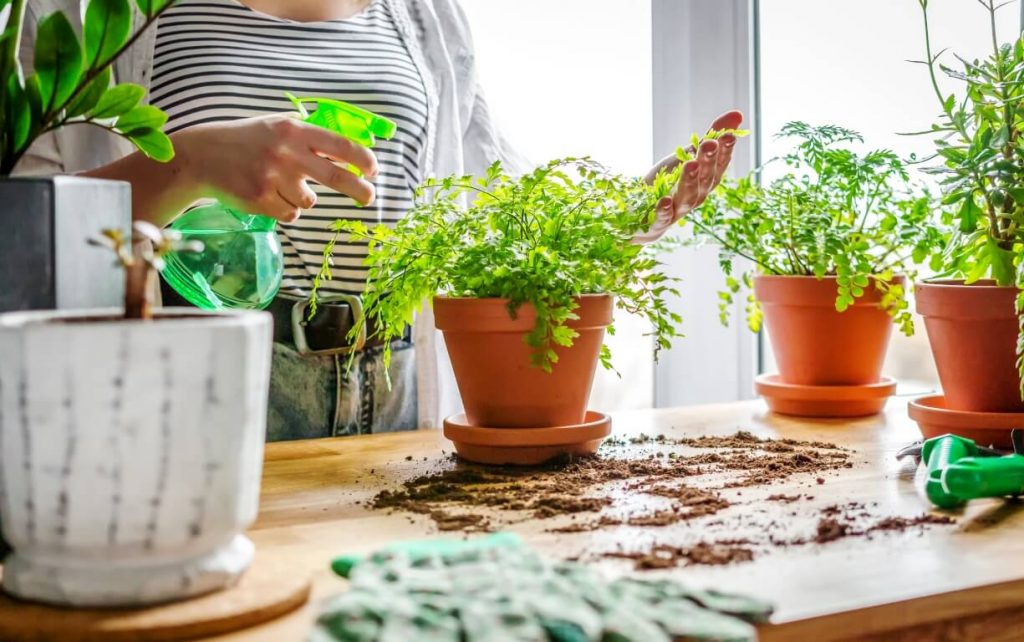Spider plant (Chlorophytum comosum) is popular houseplant. It is sometimes referred to as ribbon plant, airplane plant, and spider ivy. This plant produces tiny plantlets or spiderettes that hang down from the mother plant like spiders on a web. That is why it is called spider plant.
The spider plant is considered as one of the easiest to grow and most adaptable indoor plants. Besides being low-maintenance, this houseplant has a plethora of advantages. This article will go through the most notable spider plant benefits.
If you are interested in houseplant benefits, you can also read
<<Peace lily Benefits>> and <<Money Plant Benefits>> articles.
Source: Ventilago
About spider plant
The perennial herb Chlorophytum comosum grows naturally in South Africa’s coastal regions and has slender, strap-shaped leaves that emerge from a central point. The leaves might be pure green or variegated, with white or yellow lines running lengthwise.
The leaves do not appear to be flat; instead, they have a channel or fold along the center. This Plant can get 12 to 15 inches tall. It can withstand irregular watering thanks to the rhizomes and thick, fleshy roots that have developed to store water [1].
Regularly, mature spider plants produce tall stalks covered in tiny, star-shaped blossoms. The flowers produce a little fruit if they are fertilized. When the flowers fall off, little plantlets appear in their place. These plantlets (spiderettes) eventually fall on the soil surface and develop their own roots. After a while, they are ready to be cut off to make new potted plants [2].
Source: Max Wei
Spider plant benefits
Spider plant benefits are numerous. They can make your house look better and boost your health. Here are some of the most important Chlorophytum comosum benefits:
Air purification
The idea of utilizing plants to filter the air within a home was inspired by NASA’s well-known study from the 1980s and 1990s. Since then, a trend known as “bringing the outdoors in” has gained traction in interior design, and the spider plant is one of these plants.
In NASA experiments, the spider plant was one of the most effective plants in purifying the air. It was able to eliminate 95% of pollutants like formaldehyde, xylene, and toluene in just 24 hours.
The spider plant accomplishes this by absorbing poisonous chemicals in addition to carbon dioxide. Then, with the assistance of microorganisms that are naturally present in the plant’s roots, these compounds are filtered out through the leaves and roots of the plant [3].
Formaldehyde, toluene, and xylene are three significant poisons that the spider plant can eliminate. In addition to composite wood flooring and furniture, formaldehyde is frequently found in building supplies. You may have recognized toluene and xylene from the sweet, strong fragrance; they are frequently present in lacquer finishes and paint thinners.
Easy to care for
Maintaining spider plants is simple. These resistant plants can withstand a lot of abuse, making them excellent choices for amateur gardeners or those lacking a green thumb.
Spider plant needs are simple [4]:
- Put the plant in a spot with good to moderate lighting and a comfortable temperature for everyone.
- Keep the soil only slightly damp. Once a week of watering is sufficient in the spring and summer; in the winter, wait until the soil has dried out a little more before watering. Spider plants are sensitive to fluoride in tap water, so consider using distilled water or rainfall for the plants.
- Every two to three weeks, apply a balanced houseplant fertilizer as instructed by the manufacturer.
Easy propagation
You can maximize the benefits of spider plants by propagating them. Spider plants make it simple for you to grow new plants from older ones. In moist potting soil, the spiderettes that sprout at the ends of the branches can easily take root.
In order to have new spider plants, place a few little pots around the main plant, then lightly press a plantlet’s base into each pot’s soil. Try to maintain the soil moistly; the spiderettes should root and be able to be detached from the parent after two to three weeks. Keep growing them in the little pots and move them to bigger ones as necessary.
Safe for Cats & dogs
According to the American Society for the Prevention of Cruelty of Animals (ASPCA), the spider plant is safe for animals. However, keeping pets away from this plant and preventing them from eating the leaves is still advised since doing so may be dangerous. Chemical elements in the spider plant are rumored to be connected to opium, and they may cause the pet to experience nausea, vomiting, or diarrhea.
Good for Feng shui
Feng shui is a theory that tries to harness energy and create harmony between the natural world and its inhabitants by strategically placing cities, buildings, tombs, architecture, designs, plants, furniture, and other elements in any location.
Because of organic, powerful, and lengthy vines, spider plants are regarded in feng shui and eastern cultures as symbols of luck and fortune. The vines stand for constancy in life.
Increase humidity
The spider plant has a high transpiration rate [5]. Through its roots, it takes in water, which it then circulates through its stems and leaves. Water evaporates into the air once it reaches the leaves, raising the air’s humidity.
The danger of various airborne infections, including cold, cough, sore throat, and flu-like symptoms, is reduced by the higher humidity. Growing spider plants at home or workplace helps to prevent these illnesses and improves focus and productivity.
Aesthetic appeal
Apart from the spider plant benefits, this plant appears to be quite attractive. It can be planted in a hanging basket or any other regular container to add some greenery to the house. In addition, the spiderettes that emerge from the mother plant and hang down the pot make it appear even more alluring.
Stress reduction
Anxiety and stress levels can be reduced by looking at plants like spider plants.
One study looked at how window views and indoor plants affected subjects. According to the findings, when individuals were gazing at indoor plants or out at nature through a window, they felt less nervous and anxious.
Spider plant flowers
No Allergy Issues
Runny noses and headaches can be brought on by both scented plants and those that produce particular pollen types. Fortunately, Spider plants do not cause any allergic issues.
The spider plant can help remove airborne allergens, including dust mites, pollen, mold spores, pet dander, and more, making it beneficial for persons with allergies or hay fever [6].
Good for patients’ recovery
The last spider plant benefit is that it can improve the healing process in medical situations. According to research from Kansas State University, patients who stayed in hospital rooms with plants had lower blood pressure and more stable, slower heart rates.
Patients healed more rapidly, required less pain medication, experienced less stress, and were less worn out.

